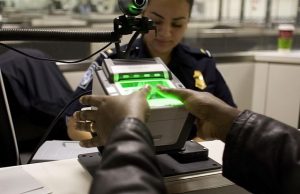With the simple scan of a traveler’s facial features, many air travel hassles could be eliminated or at least reduced. But we may not be as far away from that reality as you think. According to a survey conducted by air transport communications firm SITA, 29 percent of airports and 25 percent of air carriers are working toward implementing this technology in order to streamline passenger navigation through security, customs, and boarding by 2020.
We reported last month about the test runs of fingerprint scanning to alleviate time spent waiting in lines at several American airports, but due to the steady increase in travel worldwide — a 7.4 percent increase from 2015 to 2016 — the need for more efficient processes to move the masses as well as enhance security is only too obvious.
 Here’s how it may work, as Sumesh Patel, SITA’s Asia Pacific president, explained to CNBC: Travelers would go to a face-scanning kiosk upon arriving at the airport. The captured biometric information would be matched to the person’s passport specs. At that point, an electronic token would be created and inputted into the airport’s system. At subsequent security checkpoints, the technology would be used again in order to match the passenger’s identity with the electronic token.
Here’s how it may work, as Sumesh Patel, SITA’s Asia Pacific president, explained to CNBC: Travelers would go to a face-scanning kiosk upon arriving at the airport. The captured biometric information would be matched to the person’s passport specs. At that point, an electronic token would be created and inputted into the airport’s system. At subsequent security checkpoints, the technology would be used again in order to match the passenger’s identity with the electronic token.
The major boon for travelers would be the elimination of the current, intrusive nature of the security system. The current challenge, however, is integrating the existing systems such as retinal and fingerprint scanning and facial recognition into one secure operating network that will not only help customers but provide sufficient data for border protection for countries. You only have to hear about all the data breaches at major retailers and even credit scoring agencies to know how important this is.
While this may sound futuristic, Dubai International Airport’s CEO Paul Griffiths, head of the world’s busiest airport, is absolutely convinced a system of this nature will be a reality within the next 10 years.
“Most of the touch points that we currently loathe about airports today — the security and immigration — will disappear. And technology will enable all of those checks to be done in the background,” Griffiths told CNBC.
What do you think about this new technology? Are you for it, or a little concerned? Share your thoughts with us in the comments below, on our Facebook page, orin our Twitter stream.
Photo credit: Gerald Nino/CPB (Wikimedia Commons, Public Domain)
